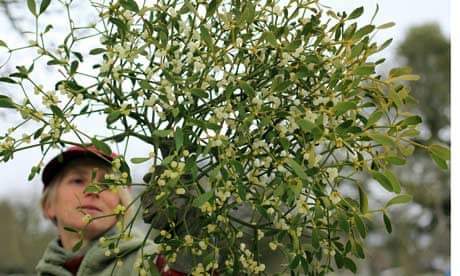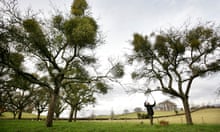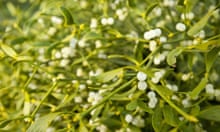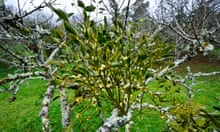The snow is deep, the frost is thick and this winter's nostalgic Christmas has also brought us a bumper crop of mistletoe. Mistletoe enjoys this current sort of weather: a continental climate, with cold winters and warm summers. The milder winters of recent times were not to its liking.
The mistletoe is a fascinating plant, a parasite that behaves like a vampire, sucking out water and minerals from living trees. Its favourite victim is the apple tree and the dwindling number of traditional, lightly managed apple orchards has hit mistletoe hard.
But in the right conditions, mistletoe spreads like wildfire through apple trees. Its berries are eaten mostly by mistle thrushes or black caps, and when the seeds are excreted in their droppings and fall on apple trees, they germinate and burrow down through the bark, plug into the tree's plumbing and begin to suck. So strong is the suction power of mistletoe that it can leave a tree stressed, just like a drought.
And yet mistletoe is not all bad. It is home to a select group of unique creatures, from a handful of beetle species to the rare mistletoe marble moth and the affectionately named "kiss me slow weevil". It also contains a poison that has been fermented and used to treat cancer.
Its fabulous, translucent, white berries fruiting in mid-winter have a long history of being worshipped as symbols of fertility, which is the origin of the kissing tradition at Christmas.









Comments (…)
Sign in or create your Guardian account to join the discussion